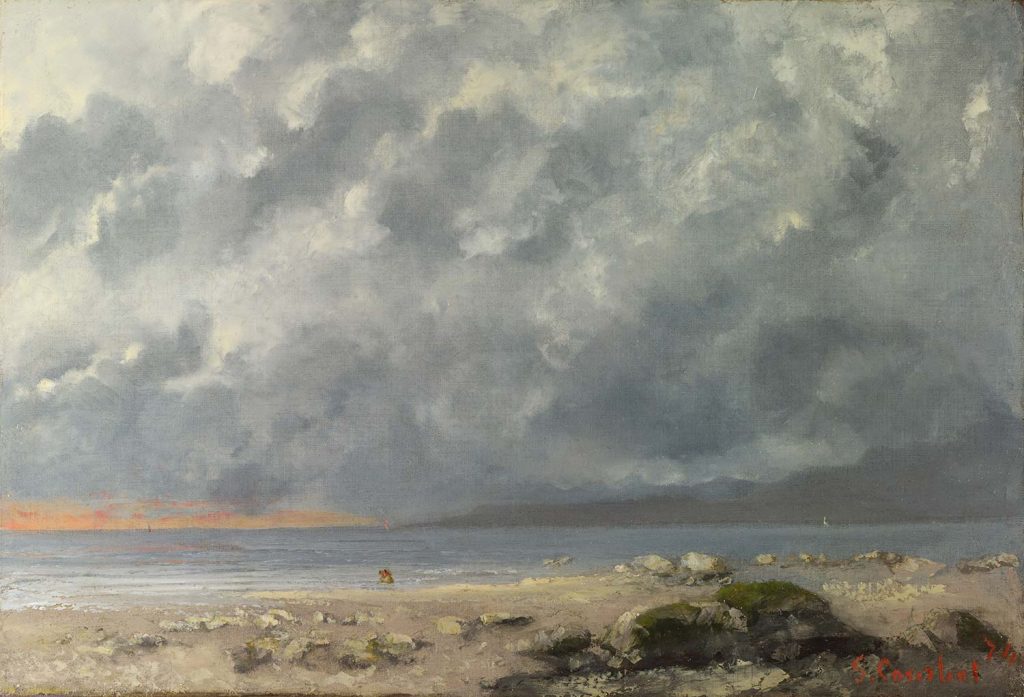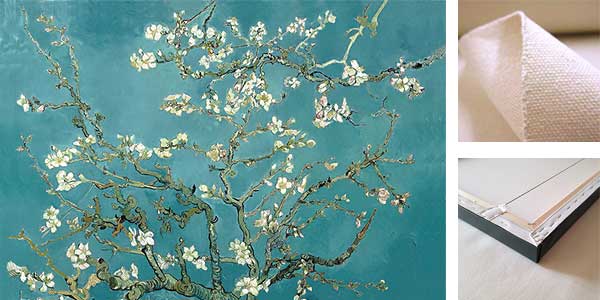
View of Lac Léman by Gustave Courbet was created in 1874. The painting is in National Gallery London. The size of the work is 38 x 55,5 cm and is made of oil on canvas.
About the Work
Turbulent grey clouds roll across the sky. The lake beneath it is calm, but a storm threatens. It’s evening, and a tiny sailing boat in the distance is little more than a smudge on the horizon against the vivid orange and gold of the dying sun. Soft red reflections streak the surface of the water. Far to the right, at the tip of the promontory, a sail catches the sun’s colours as a boat slips homewards for shelter. Further along towards the mainland a tall spire gleams white against the deep grey shadows of the hills.
The water ripples in towards the shore, lapping around the pale rocks on the strip of sand to the right. Close to us, bigger, darker rocks topped with green seaweed face the waves that will come if the wind rises. A little way out a woman stoops to collect freshwater shellfish, her enormous basket hooked over her back. Her red coat echoes the red of Courbet’s firm, bold signature in the bottom right corner of the painting. Read more in National Gallery London
About the Artist
Jean Désiré Gustave Courbet (10 June 1819 – 31 December 1877) was a French painter who led the Realism movement in 19th-century French painting. Committed to painting only what he could see, he rejected academic convention and the Romanticism of the previous generation of visual artists. His independence set an example that was important to later artists, such as the Impressionists and the Cubists. Courbet occupies an important place in 19th-century French painting as an innovator and as an artist willing to make bold social statements through his work.
Courbet’s paintings of the late 1840s and early 1850s brought him his first recognition. They challenged convention by depicting unidealized peasants and workers, often on a grand scale traditionally reserved for paintings of religious or historical subjects. Courbet’s subsequent paintings were mostly of a less overtly political character: landscapes, seascapes, hunting scenes, nudes, and still lifes. Courbet was imprisoned for six months in 1871 for his involvement with the Paris Commune and lived in exile in Switzerland from 1873 until his death four years later. Read more in Wikipedia
Order a reproduction of this work (printed on canvas)
